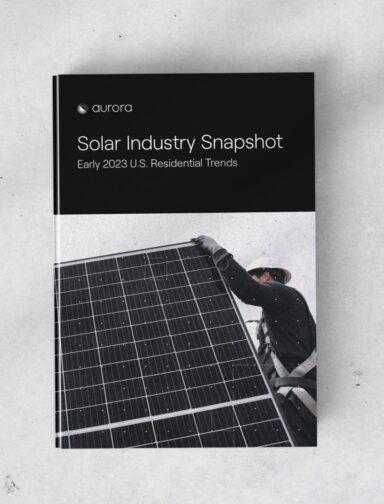The One Big Beautiful Bill (OBBB) has been signed into law. As every solar installer knows, it’s a sweeping budget reconciliation package that will have profound implications for America’s energy landscape. Then, just when the solar industry thought it had some clarity on the path ahead, the President signed a new Executive Order (EO) on Monday that directs the Departments of Treasury and Interior to provide new tax credit guidance within 45 days. At this time, it seems the aim is to tighten access to solar tax credits.
Despite calls for stability, foresight, and support for energy independence, this legislation undermines the very mechanisms powering the energy revolution and sets the stage for uncertainty at a moment when resilience is essential. While the final bill is, in many ways, not as damaging as earlier versions could’ve been, this outcome still presents major headwinds for solar, especially with the new EO that explicitly orders the removal of subsidies and enforces strict eligibility rules.
This casts a long shadow on the entire solar ecosystem, from manufacturers and installers to dealers and homeowners. According to the Solar Energy Industries Association, the bill jeopardizes up to 330,000 jobs and 331 U.S. factories.
Most concerning is the harm the legislation will inflict on American consumers. Solar is the quickest and most cost-effective way to add capacity to the grid. Cutting it now, as A.I. and other energy-hungry technologies are growing, presents real issues that traditional energy generation isn’t equipped to meet without solar. Households will see their energy bills rise even faster while, at the same time, energy shortages will become more common.
Want to learn more? Join us Thursday, July 10 for our FREE webinar, OBBB: Solar Policy Updates Unpacked.
What the law now says
Among the most significant provisions in the OBBB is the repeal of the 25D Investment Tax Credit (ITC) for homeowners who purchase solar systems with cash or loans. This credit will sunset at the end of 2025, eliminating a key incentive that helped millions of Americans cut costs, gain energy independence, and hedge against volatile utility rates.
The bill preserves 48E, the ITC available to businesses, including eligibility for third-party owned (TPO) residential solar systems. Projects that begin construction within one year of the bill’s passage are grandfathered in for four years. After that, only systems placed in service by the end of 2027 will qualify.
However, beginning in 2026, 48E eligibility for solar projects will be subject to Foreign Entity of Concern (FEOC) cost thresholds — starting with a 40% non-FEOC content requirement that increases over time. This provision may prove especially burdensome, given how intertwined current solar supply chains are with Chinese manufacturers.
The solar industry should not rely on federal tax credits indefinitely, of course. This was never the intent of the ITC. However, the cuts made last week are significant. The lack of a longer-term phase-down timeline is going to force the industry to scramble to meet tight deadlines and potentially face a massive drop in demand shortly thereafter.
The economic toll
The broader energy picture is bleak. According to analysis from Princeton’s REPEAT Project:
- The OBBB will raise U.S. energy costs by over $50 billion annually by 2035
- American households can expect their energy bills to rise by more than $280 per year by 2035
- The law shrinks solar’s expected growth by almost 30 gigawatts from 2025-2030, and 140 GW through 2035
- $500 billion in capital investment in clean energy will evaporate
- The U.S. will emit 190 million more metric tons of carbon dioxide annually in 2030 and 470 million tons more in 2035 — equivalent to adding an extra 100 million cars to the road
Trump’s latest Executive Order
The President’s Executive Order (EO) is an additional complication. It directs the Treasury Department to redefine technical terms like “Begin Construction” with the goal of “strengthening the repeal of solar tax credits” and “enhancing” FEOC restrictions within 45 days by August 18, 2025. The EO also directs the Department of the Interior to review regulations regarding “preferential treatment” for solar and wind projects, though efforts were already underway there.
While it remains to be seen how big of an impact this EO will have in addition to the OBBB, it signals that the White House is undermining the renewable energy industry with administrative rules changes after the fact.
What this means for solar
In the short term, we expect a surge in loan-driven solar installations as homeowners rush to lock in the residential tax credit (25D) before it expires. But starting in 2026, the economics of residential solar will shift dramatically. Large providers with safe-harbored inventory will be better positioned to absorb the policy change, while smaller, loan-reliant installers may struggle — or go out of business.
In the commercial and industrial (C&I) sector, we anticipate an urgency to begin construction within the next 12 months to maximize eligibility under 48E. That could create a short-term project boom, followed by a slowdown as the 2027 service deadline looms.
A critical juncture for the industry
The OBBB and EO are a setback — introducing new costs, uncertainty, and complexity. But it’s not a death knell. What comes next depends on how the solar community responds.
There is a real opportunity for innovation: New financing products, better approaches to customer acquisition, and automation of critical processes can all drive down the cost of solar and reduce the industry’s reliance on government incentives.
If there’s a silver lining, it’s that this outcome was improved by relentless industry advocacy. We helped prevent a far worse version of this bill. We reminded lawmakers that energy independence, grid resilience, and climate progress are not partisan concerns; they’re national imperatives.
We will continue that fight. For solar. For our workforce. For American leadership in energy. For everyday Americans. The stakes are high, but the cause remains worthy. Let’s keep going.
Want to learn more? Join us Thursday, July 10 for our FREE webinar, OBBB: Solar Policy Updates Unpacked.



